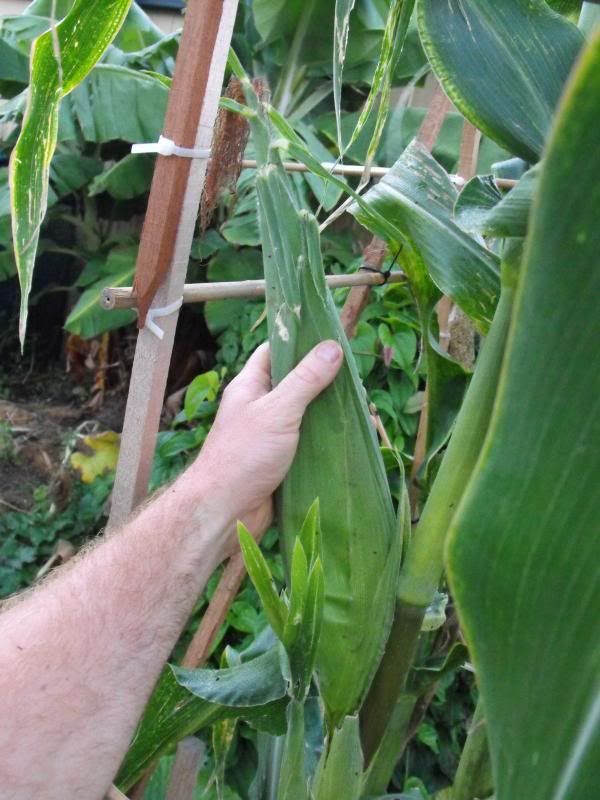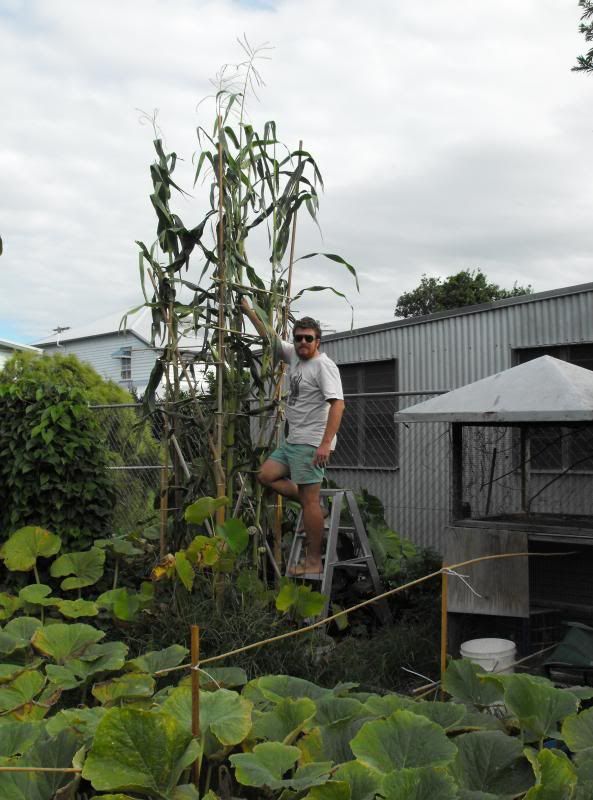|
|
Post by stillman on Mar 30, 2014 15:49:13 GMT -5
  Started silking 9th of March so am I right to think I can harvest ears mid April and dry inside for seed? Or should I leave the ears on the corn longer? I will have 4 cobs of corn to use for seed not ideal but a start, considering I started with 4 seeds. This is 71 days from germination. Has been a warm Summer and Autumn so far, only just getting recent rain in the last week, I am concerned the cobs may mould as humidity has been evil. |
|
|
|
Post by Joseph Lofthouse on Mar 30, 2014 21:11:14 GMT -5
stillman: I'm loving that corn and the photos. In my garden, sweet corn seed is viable about 25 days after silking. (The tips of the husk leaves start to turn tan.) Mid April would give you about 35 days on your Peruvian corn... Weather cooperating I try to wait to harvest flour and flint corns until about 55 days after silking, though they are viable much sooner than that.
|
|
|
|
Post by stillman on Mar 31, 2014 2:59:19 GMT -5
Will leave them on for the 55 or until I see mould etc. I am really looking forward to our Spring/ Summer, next few months will be spent growing green manure cover crop and getting soil up to scratch.
|
|
|
|
Post by stillman on Apr 7, 2014 14:57:26 GMT -5
 Corn cobs are maturing will try and leave them as long as possible, they went a little taller then 4 metres or 13 feet and a bit. Hopefully I can get some good seed so I can use the morado maize in my future breeding plan, each plant put out 2 cobs unfortunately due to the lack of plants I had to start with pollination will be hit and miss on some. I grew them in a hill about 30cm a part so will probably use similar spacing possibly a little tighter in my summer grow out. |
|
karl
gopher

Posts: 5 
|
Post by karl on May 26, 2014 6:41:52 GMT -5
The giant Cuzco corn does not produce giant stalks in Peru. O. F. Cook was the biologist with National Geographics' expedition to Macho Pichu. He observed this corn in its home. In 1916 he wrote:
"The usual behavior of the Cuzco corn in the United States is to produce plants of enormous size that mature very little seed, often none at all. It has been taken for granted that the size of the plants should be in proportion to the enormous kernels, and that our seasons were not long enough to permit this type of corn to mature.
"But in Peru one does not see these gigantic, infertile plants, nor any indication that the corn crop requires a large amount of heat to bring it to maturity. The impression one gets from the Peruvian corn-fields is that the plants are not taller than with us and rather more slender, the most striking peculiarity being the prevailing red color of the foliage. The best development and largest ears of the Cuzco corn are found in some of the higher valleys, at elevations between 9,000 and 11,000 feet, in districts where the summer climate is cooler than in any of the corn-growing regions of the United States.
"Thus it becomes apparent that the possibility of utilizing the Cuzco type of corn in the United States is still practically untried, because of our lack of information regarding the normal behavior of the plant and the natural conditions to which it is adapted. As might have been expected, if these facts had been known, the best results thus far obtained from the Cuzco corn in the United States have been in California, in the cool climate of the coast districts, where there is too little heat for our eastern varieties to thrive."
I am currently growing a very dark purple flour type. I'm hoping to cross it with a couple of varieties of early sweet corn that I also have growing. I like the idea of a drippy, messy purple sweet corn for kids.
I also have a short row of a Mexican variety called 'Mais Morado'. This is a light red hominy-type corn. I bought the seeds of Peruvian Purple, Mais Morado and Cuzco from a Latin Market.
Karl
|
|